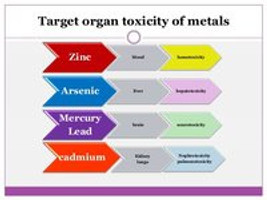Heavy Metals - What is all the Fuss?
Posted by Purrfectplay on Oct 06, 2014
Does Anyone Test Pet Toys For Toxins and Safety?
It looks like almost no one does.
The Consumer Product Safety Commission (CPSC), for example, only regulates products that hurt humans- and even this regulation seems fairly ineffective. California recently sued 20 large companies for negligence in distributing unsafe children's toys. Most of these toys contained lead. According to California, confusing regulations, poor inspection rates, and loopholes increase the risks that a child may play with a toxic toy. They hope costly fines will force companies to change their relationships with suppliers, pushing a cleaner approach to toy manufacturing.
www.sfgate.com/cgi-bin/article.cgi?file=/c/a/2007/11/20/MNRITFISE.DTL
What about pet toys--do they contain high levels of lead and other heavy metals? Very little testing has been done. If you have a few thousand dollars you can have a toy tested. This is what a Chicago woman did. The pet toys she had tested were found to contain elevated levels of lead, chromium, and cadmium. Wal-Mart, the store which sold these toys, is suing the company that did the testing. While the results may be controversial, they do open up a whole new category of concern for pet guardians. Read more about this news story and see what you think -- http://www.itchmo.com/wal-mart-threatens-legal-action-after-lab-finds-lead-other-toxins-in-pet-toys-2947
What Real Harm Does A Tiny Bit of Heavy Metal Do?
Heavy/toxic metals are stable elements with a density at least five times that of water. Because of this weight and stability, heavy metals such as lead, can not be absorbed by the body and instead accumulate in soft tissue, organs, and bones. If these metals enter and accumulate faster than the body's detoxification pathways can dispose of them, a gradual buildup will occur and interfere with natural biological processes.
Heavy/toxic metals include: mercury, nickel, lead, arsenic, chromium, and cadmium. Lead has been shown to affect virtually every major organ in the body. GI upset is a consistent early symptom of lead poisoning. Symptoms of neurological effects may include irritability, muscular tremors, loss of memory, and hallucinations.
Many pigments and dyes contain cadmium compounds. Cadmium is a component of some solder and batteries. PVC plastics may contain cadmium stearate as a heat stabilizer. The human body lacks the ability to expel cadmium. Practically all cadmium taken in during ones life is stored in the kidneys, which gradually results in reduced kidney function by damaging the kidney's filtering system. Cadmium, in humans, can linger in the kidneys for 20 to 30 years, with each exposure having an additive effect. Trivalent chromium occurs naturally, and in small amounts is an essential nutrient for humans. Hexavalent chromium and chromium are generally produced by industry. Hexavalent chromium rarely occurs in nature. It is very toxic and is used in chrome plating, in manufacturing dyes and pigments, leather tanning and wood preserving.
How Might Our Pets Make Contact With Heavy Metals?
Heavy metals are an inexpensive additive and are used often, showing up in surprisingly common situations. Because heavy metals are associated with bright colors look around and see what stands out in your home. For example, any brightly painted wood may contain lead--what about that step stool your puppy loves to chew on? Along the same line, bright fabric dyes can contain chromium and/or cadmium. At the very least wash brightly colored items before giving them to your pets. Better yet, go for dye free or low impact dyed toys and apparel. Poly Vinyl Chloride (PVC) plastics often contain heavy metals to heat stabilize the plastic; recent testing shows your dog's favorite squeak toy may also contain lead.
If Heavy Metals Are So Dangerous Why Do We Use Them?
Heavy metals are cheap and regulation is poor. In the United States we have rules, but they are poorly enforced. China, the source for most heavy metal tainted products, has very strict rules on the books but almost no way to enforce them. The manufacturing atmosphere is highly competitive. Lead tainted paint is 30% cheaper than non-lead paint, representing a crucial competitive edge. According to the US Geological Survey, China leads the world in lead mining and production--up 50% since 2001. Sadly, pressures from the outside world for ever cheaper goods have set small factories against each other. This has led to an abandonment of even the simplest of safeguards and many Chinese communities are saturated in lead and other heavy metals. It lingers in the air, leaches into water supplies and crops, and coats surfaces outdoors. Factories in China often fail to provide adequate safety protection for workers handling these hazardous materials. Read more: www.nytimes.com/2007/09/11/business/worldbusiness/11lead.html?_r=2&oref=slogin&oref=slogin
We Are All In This Together
A pet guardian is responsible for their household pets and this is not always enough. Toxins and heavy metals will always be present if we continue to worry only about the end product.. We can choose wisely and support those who are doing their best to produce a safer, more eco-friendly toy. We can also take a more active role. Ask your toy supplier if they know where and how their toys were crafted. He or she might be puzzled by your question but eventually this puzzlement may be replaced by thoughtful concern.
The pet guardian world has seen that actions taken thousands of miles away can affect our pets. I have met many bereaved people whose dogs and cats died during the pet food debacle. Pet guardians can make a real difference-- if we make informed choices and stand up for our pets. It is also crucial that we stand up for those who craft the products are pets will come in contact with. Love of all kinds, especially love for our pets, opens our hearts to others--this is simply how things work best.
More Information: Recent article on household sources of toxic chemicals: www.sfgate.com/cgi-bin/article.cgi?file=/c/a/2006/02/01/HOG8LGUSDT1.DTL
Important and thorough source for heavy metal information with suggestions for natural treatments www.lef.org/protocols/prtcls-txt/t-prtcl-156.html


